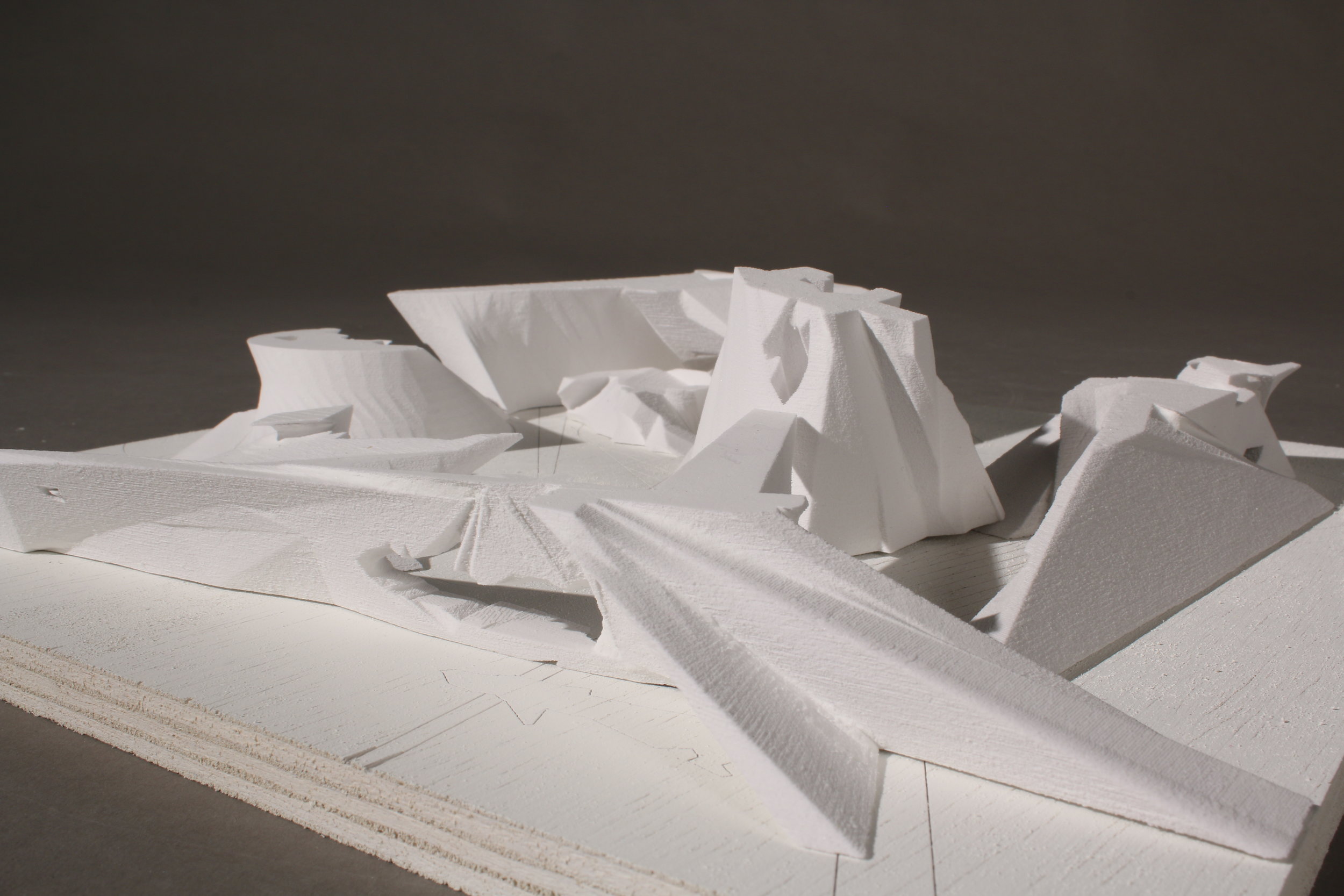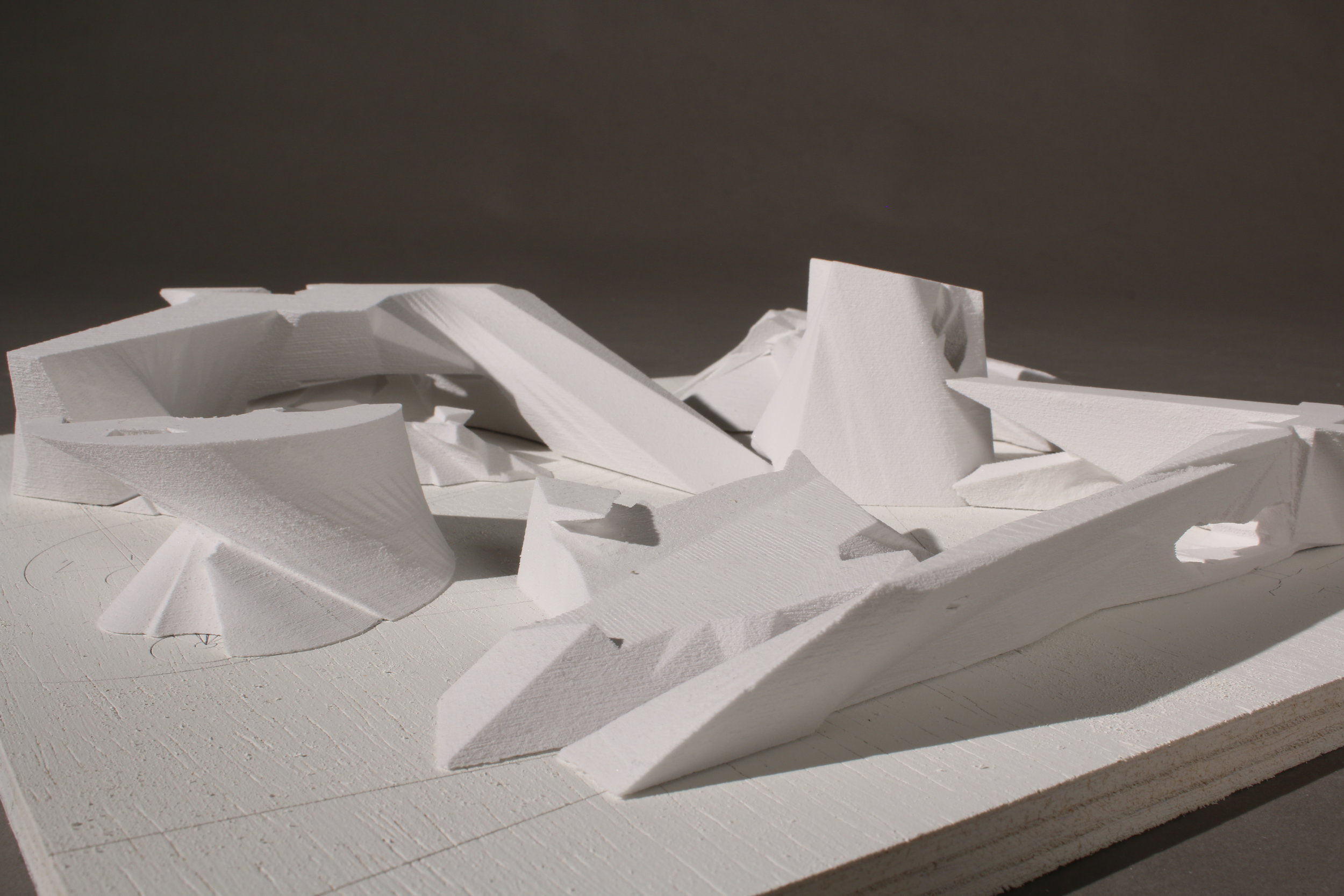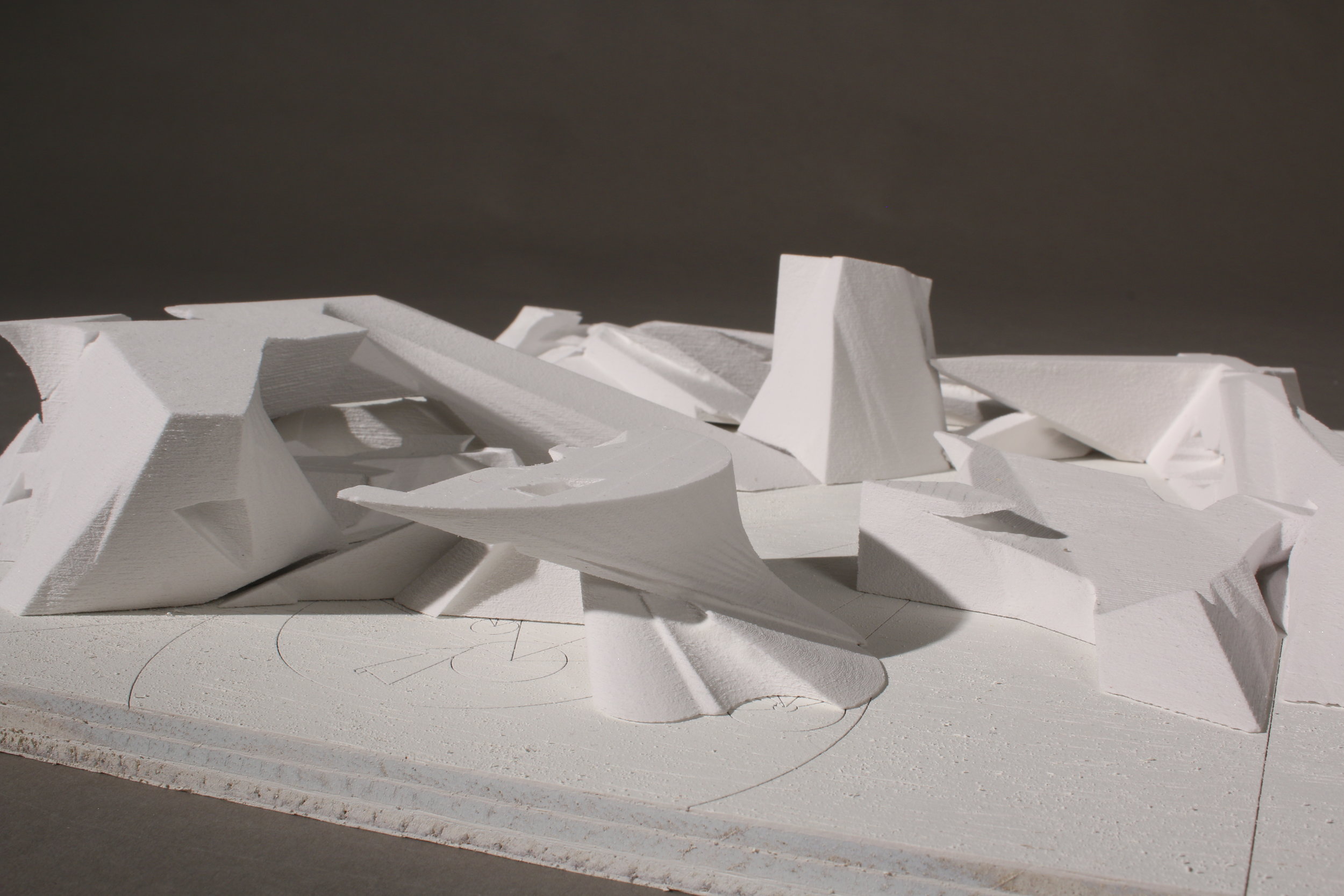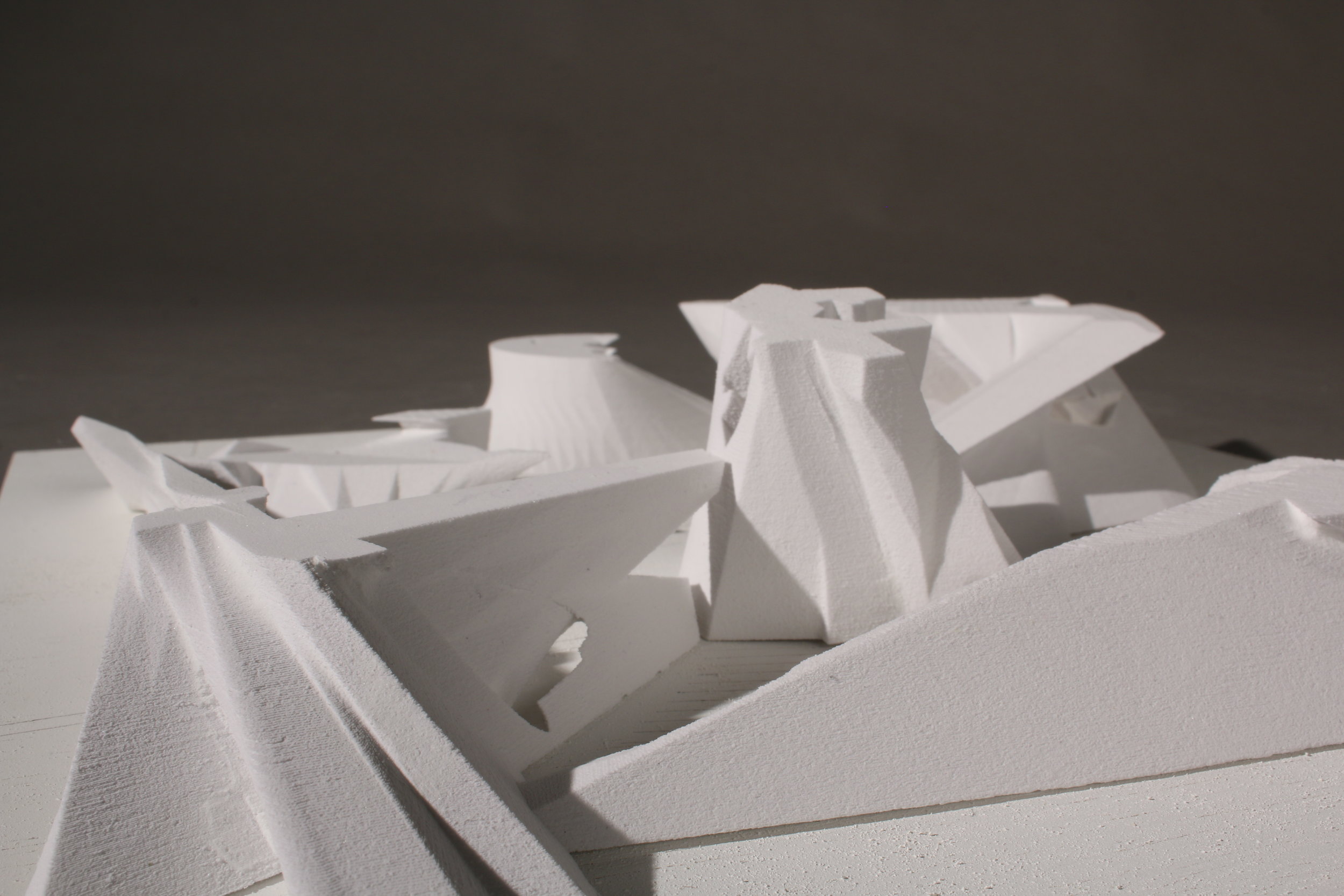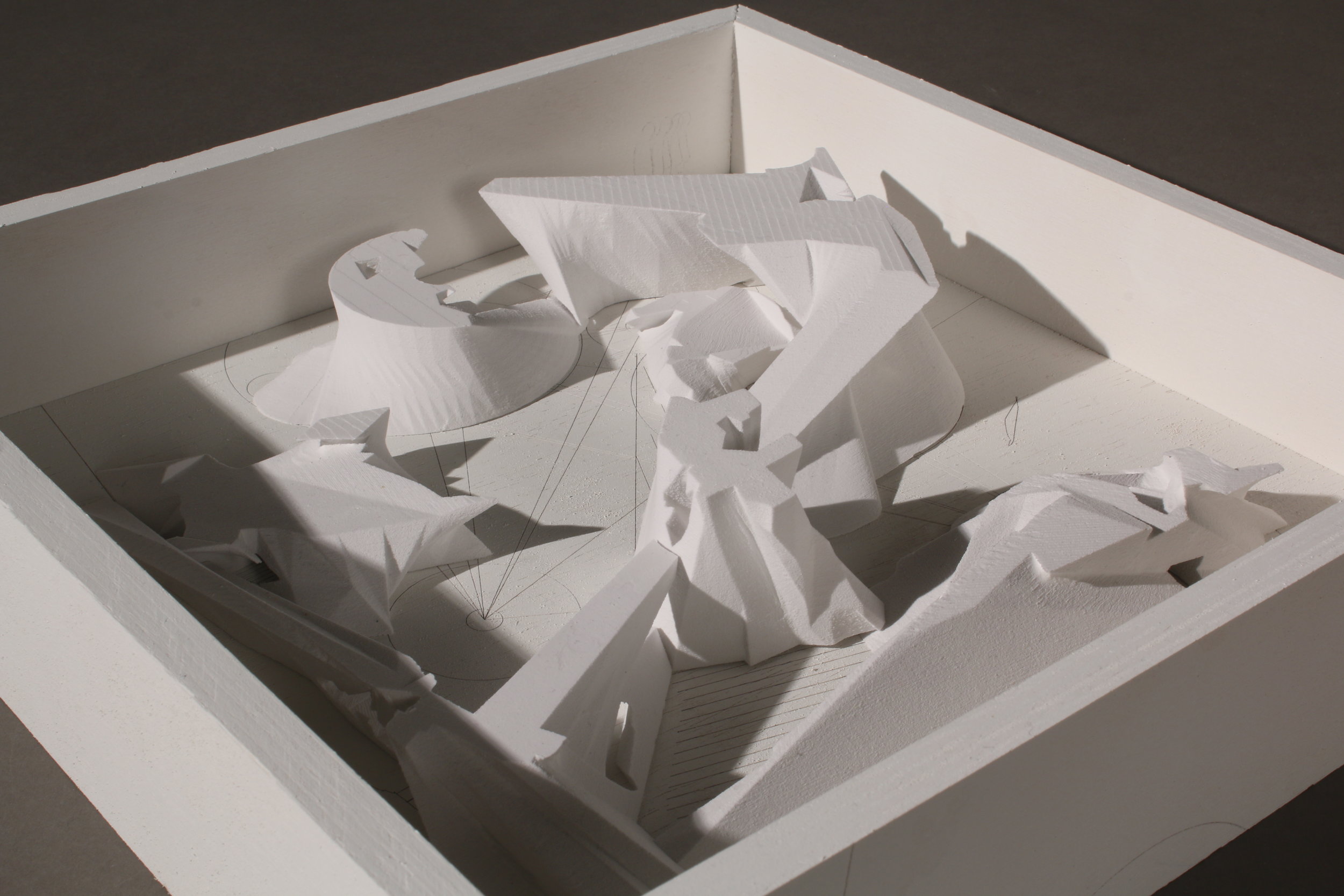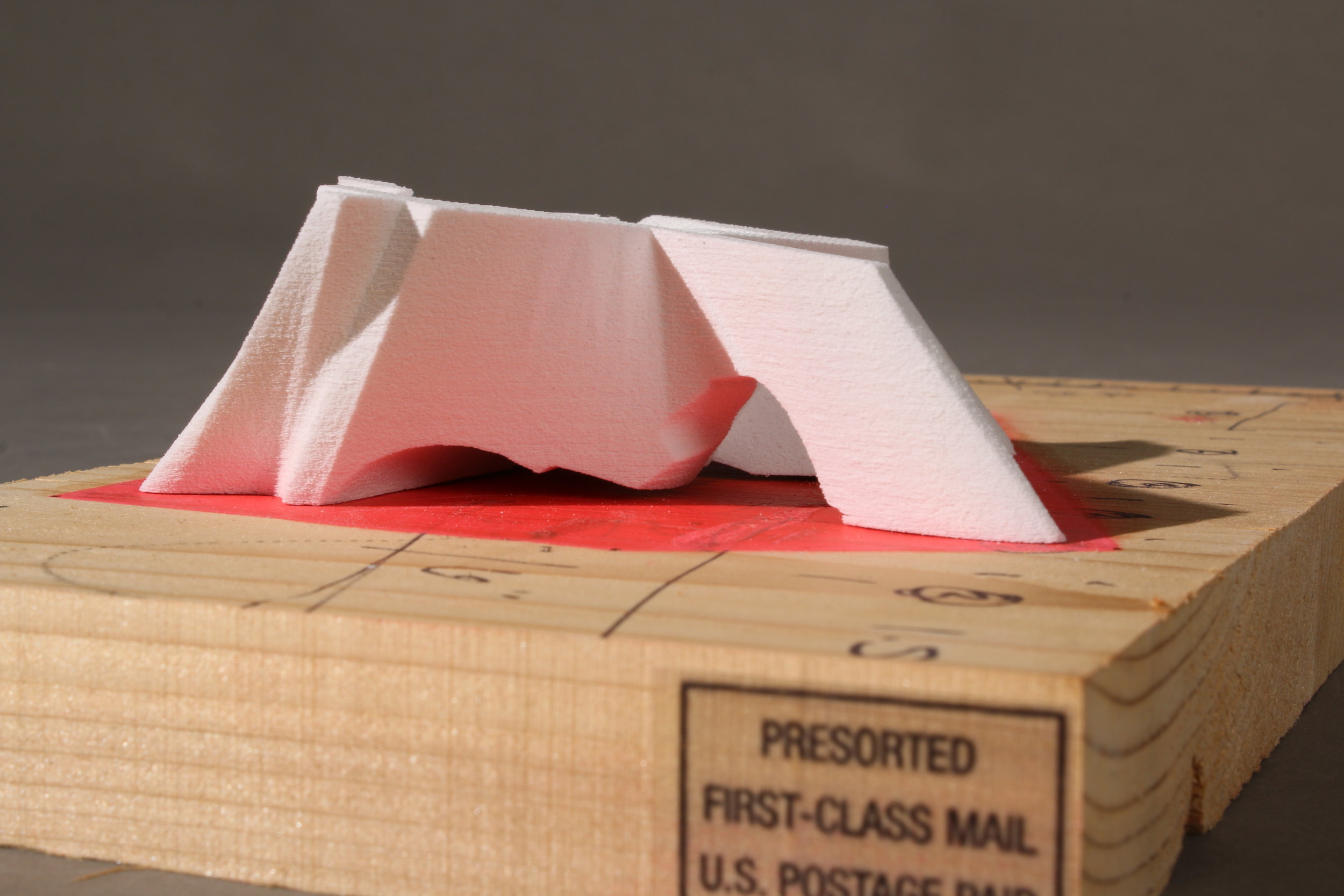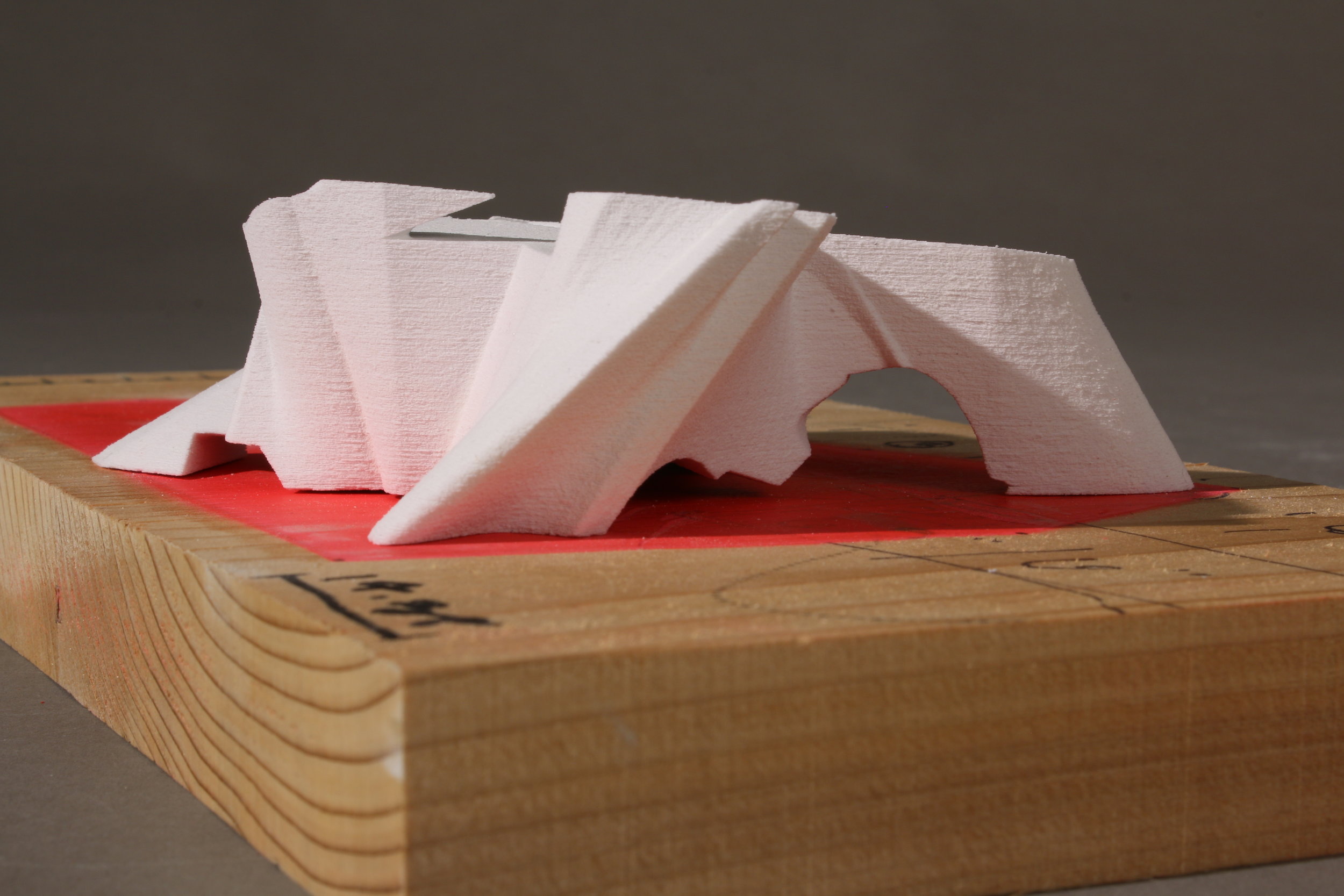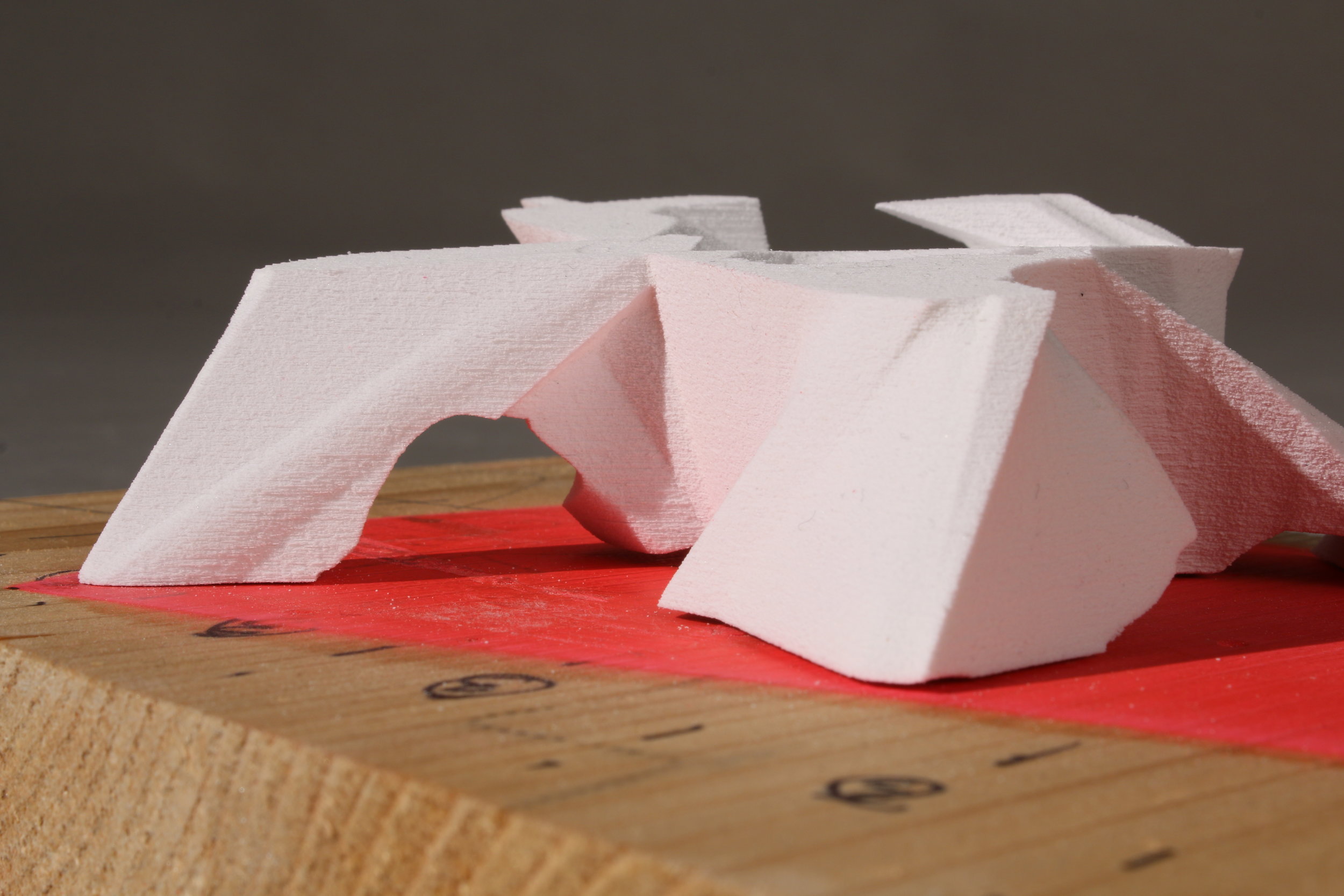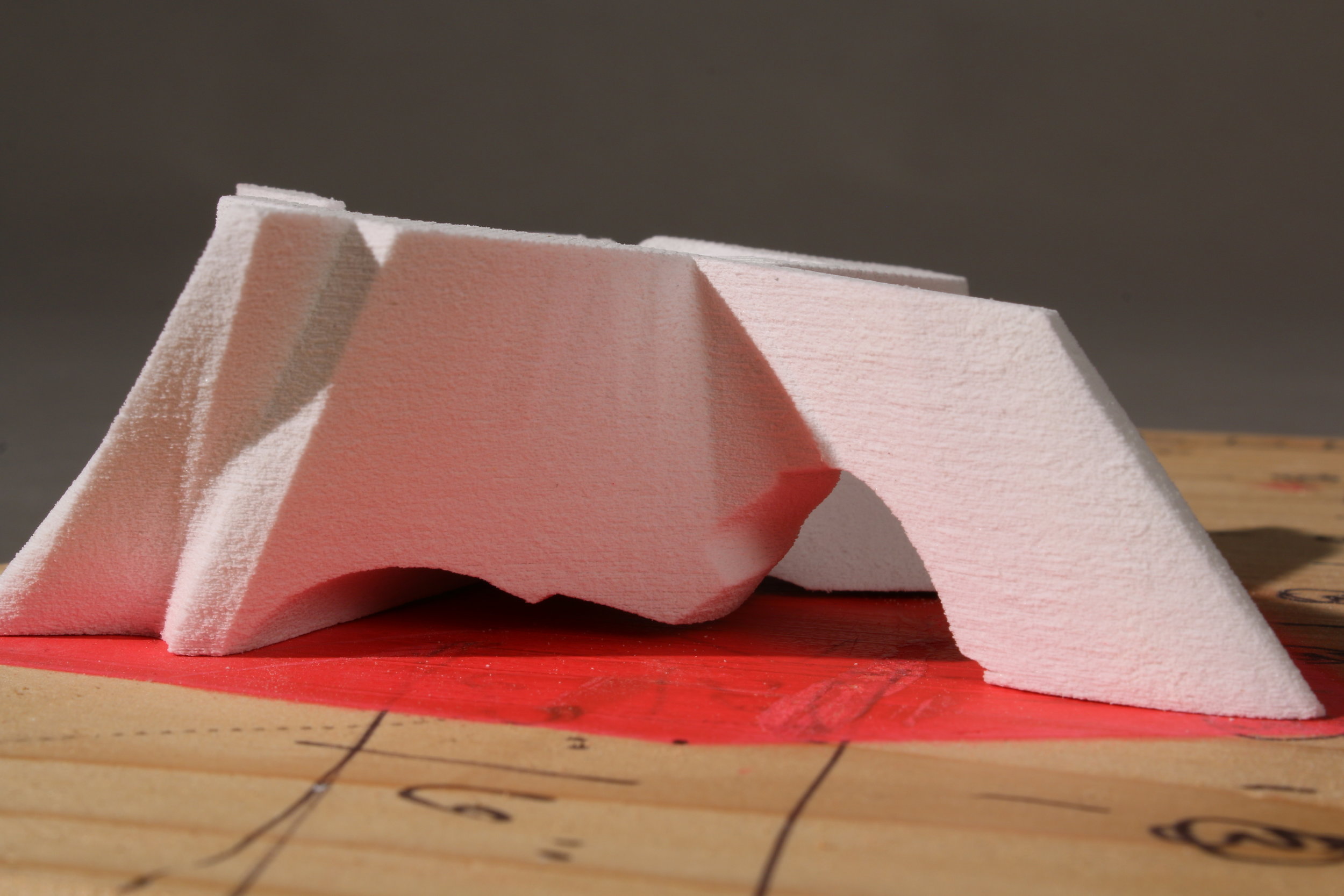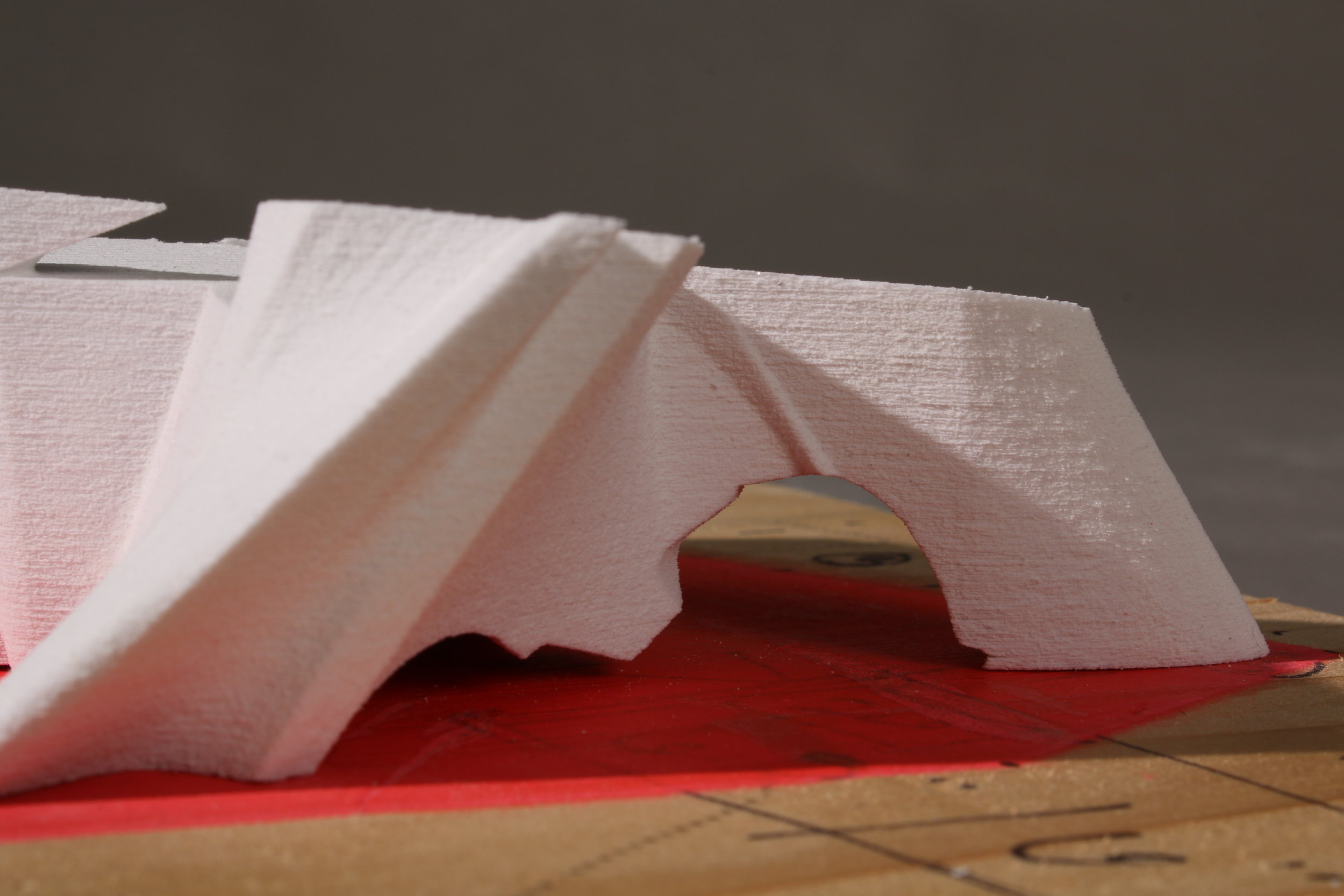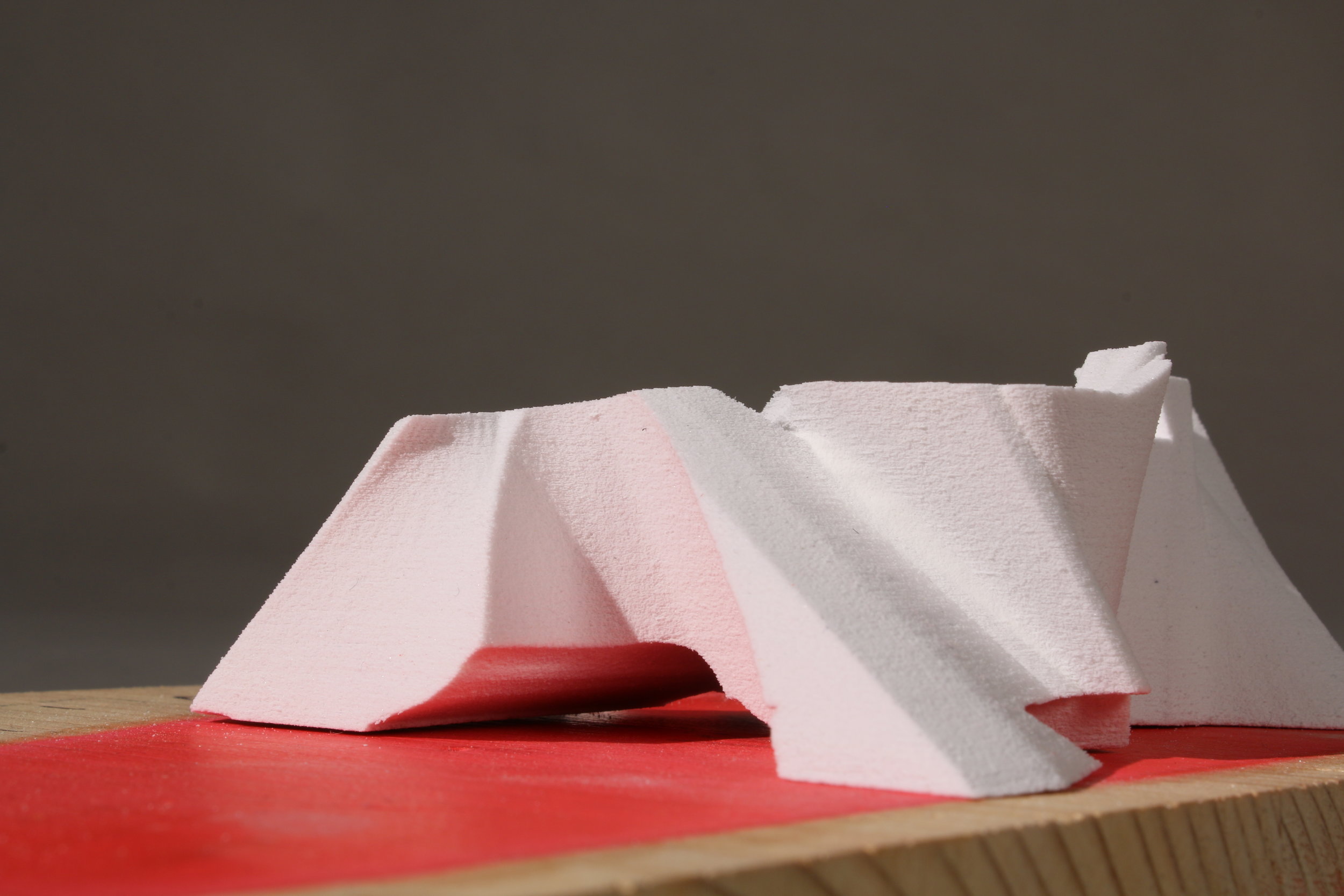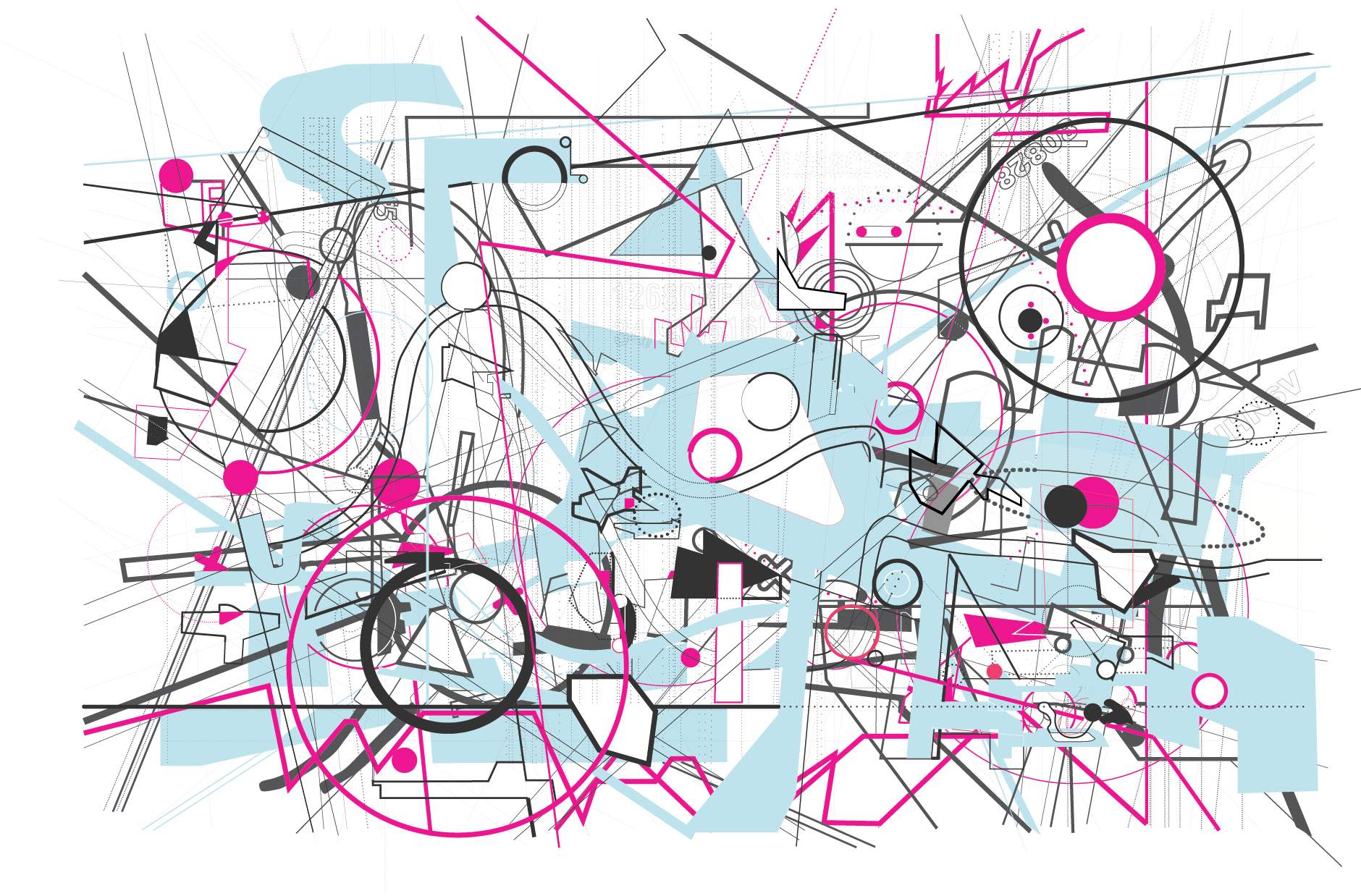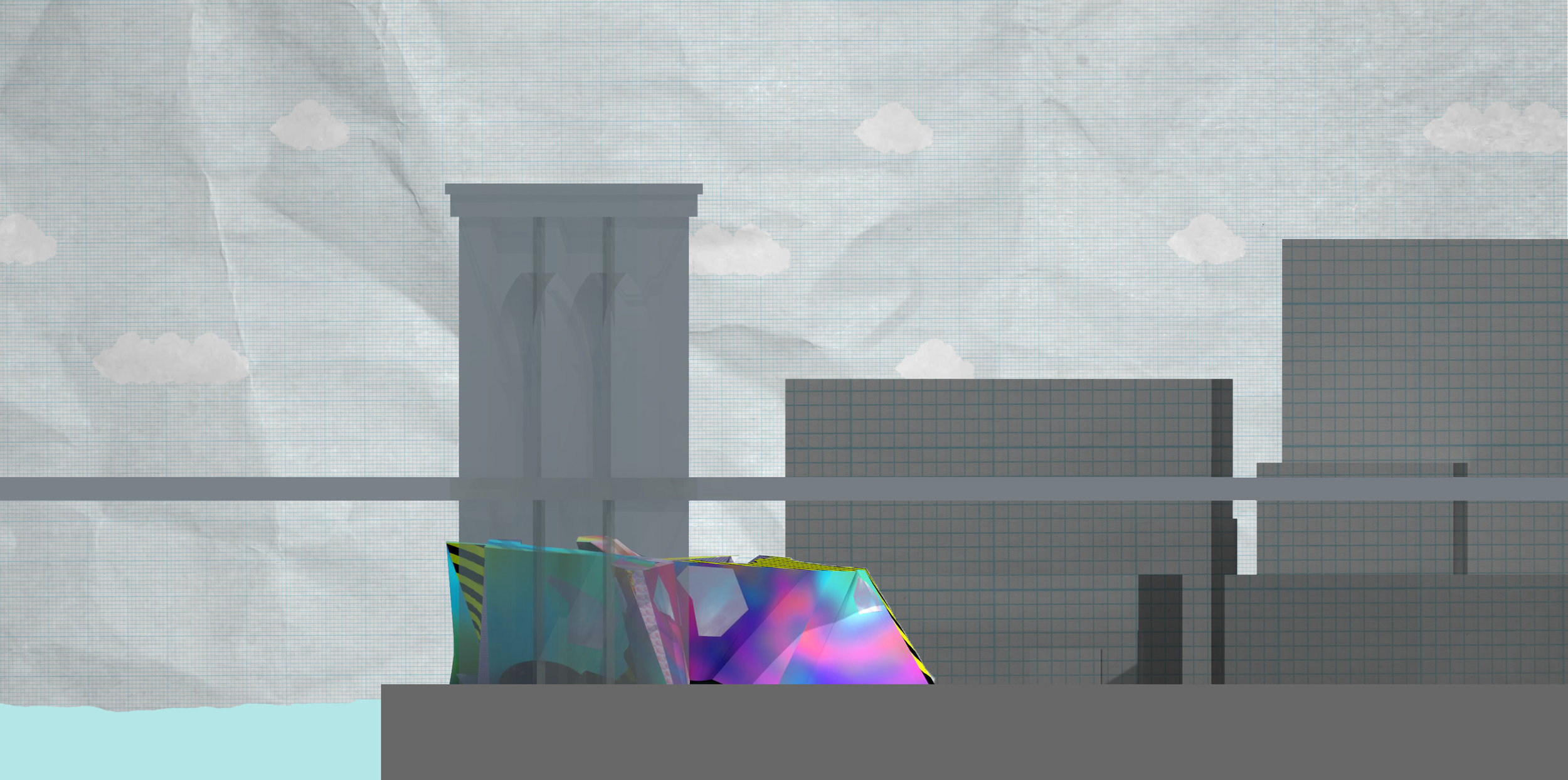A Home for Hip Hop
A hip-hop museum in Brooklyn's DUMBO neighborhood
In Charlie Ahearn's 1983 film Wild Style, hip-hop, graffiti art and break dancing were broadcast to a much wider audience, introducing this culture to the masses. Hip-hop, and its predecessor jazz, are regarded as two truly American born art forms with hip-hop's roots deeply ingrained in New York and is inextricably tied to graffiti and breaking. Wild Style proved as the launch point for this new art form to gain national recognition and blossom into one of the most widely popular creative genres.
The exploration of hip-hop music into architecture manifests into a museum dedicated solely to the culture surrounding and created by the genre, recognizing it as an important art form. As the Cornell University Library has recently begun archiving hip-hop, and in many ways legitimizing it as an art. The site of the museum is in the DUMBO neighborhood of Brooklyn, directly under the Brooklyn Bridge, in arguably the territory hip-hop was born in, and contain a collection similar to Cornell's. The project analyzed components in a time-specific glimpse into hip-hop’s history from its origins in the 1970s to roughly 2000. The museum concerns itself with the entirety of the culture of hip-hop and does not limit itself to strictly music, but also MC-ing/DJ-ing, fashion, dance (breaking), and art (graffiti).
Important to the analysis and generative process of the project were three (3) components. Through conceptions and translation, analysis and synthesis into an architectural response. The project was treated with numerous constraints and loose procedural order. The process mirrored the actions of those that created hip-hop culture. As an MC, the project would sample itself from previous drawings. As a jazz musician, it would go on personal riffs. As an artist, it introduced to aesthetic sensibilities and signature. On the other hand, as a designer, it utilized technology and convention. In doing so, the project attempts to bridge the gap between strictly graphic representation through audio analysis into meaningful generative, formal structures.
Models were constructed from playlists, drawings illustrate parts or whole songs. Each iteration became a source for the next procedural step. The project, much like an MC, was continuously cut, slowed, twisted, and altered, just as in architecture we scale, rotate, reflect, repeat and overlap. The result is a structure that serves as a catalogue and visual association of the hip-hop culture. The form is dictated by the shape language created through interpretations of the music, the graffiti, and the understanding breaking.
Fall 2015
